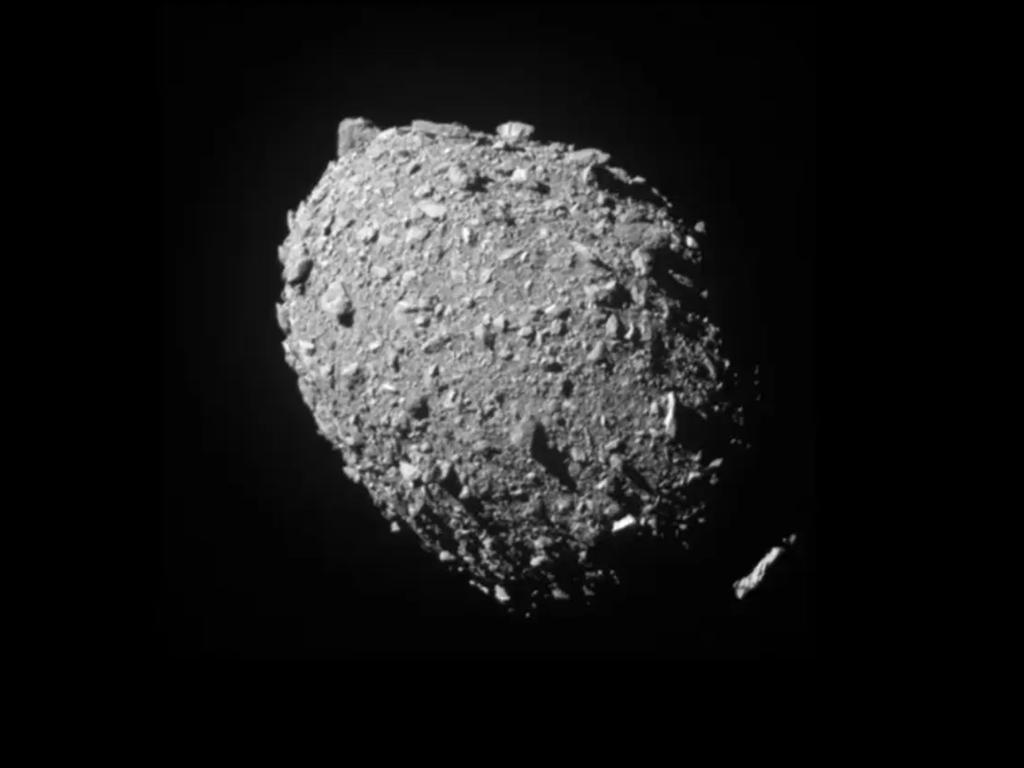Space debris caused by NASA mission may create first human-made meteor shower
NASA has revealed incredible details about a potential “human first” event in space, which was caused by a bold test involving an asteroid.
Rocky debris caused by a NASA mission could create the first human-made meteor shower.
In Sept. 2022, NASA’s Double Asteroids Redirect Test (DART) intentionally collided with a tiny moonlet named Dimorphos, which orbited the asteroid Didymos, to test its asteroid deflection technology.
Scientists believe the crash produced up to one million kilograms of rocks and dust — and a new study suggests fragments of Dimorphos could land around Earth and Mars in 10 to 30 years, and the meteor showers could last for up to a century.
“Once the first particles reach Mars or Earth, they could continue to arrive intermittently and periodically for at least the next 100 years, which is the duration of our calculations,” Eloy Peña Asensio, a researcher for the Deep-space Astrodynamics Research and Technology group at Italy’s Polytechnic University of Milan, told CNN.
The debris can also potentially generate a light show over Earth.
“This material could produce visible meteors (commonly called shooting stars) as they penetrate the Martian atmosphere,” Asensio added.
The particles will be small, ranging from the size of a grain of sand to that of a smartphone, so will not be a threat to the Earth’s surface, he added.

For the study, researchers used data from a small satellite that separated from the spacecraft before impact to capture footage of the collision and the debris cloud that formed in its aftermath.
“This crucial data has enabled and continues to enable detailed analysis of the debris produced by the impact,” Peña Asensio continued.
With this data, Asensio and his team of scientists conducted simulations of 3 million particles that the impact made, also taking into account the gravitational power of Didymos, Dimorphos, the sun and other planets.
They deduced that if the debris left Dimorphos at speeds of 1,800 kilometres per hour, some pieces could get to Mars, while smaller and speedier ones travelling at 5750 kilometres per hour could reach Earth in less than 10 years.

Parts of space shuttles and dead satellites can also wreak havoc in space. Man-made pieces of space junk either burn up on re-entry, as was spectacularly witnessed in Melbourne in 2023, or remain in orbit.
A NASA report claimed that there were more than 500,000 marble-sized or bigger pieces of space debris orbiting Earth, a number that grows to more than 100 million when you include even smaller pieces.
University of Melbourne astrophysicist Clare Kenyon said this was causing issues for further space exploration.
“When you think about all the stuff up there, both the useful things like satellites and space stations, plus the junk – apparently there is a glove and toothbrush and other bits of discarded equipment – you can easily imagine that there is a high chance of collisions,” she said.
“These collisions tend to produce smaller and smaller pieces of junk. The first-ever occurrence of two satellites smashing into one another was in 2009 and resulted in an estimated 2000 pieces of material in a huge debris cloud.”
It’s not just causing issues for those with interests in space Ms Kenyon said, but it’s also having a detrimental impact on those of us anchored here on Earth.
“The atmosphere can be badly affected by re-entering space junk,” she continued.
“As it burns up, the chemicals making up the re-entering material are released. Some of these are known to weaken ozone.”
This article originally appeared in the New York Post and was reproduced with permission
Originally published as Space debris caused by NASA mission may create first human-made meteor shower




